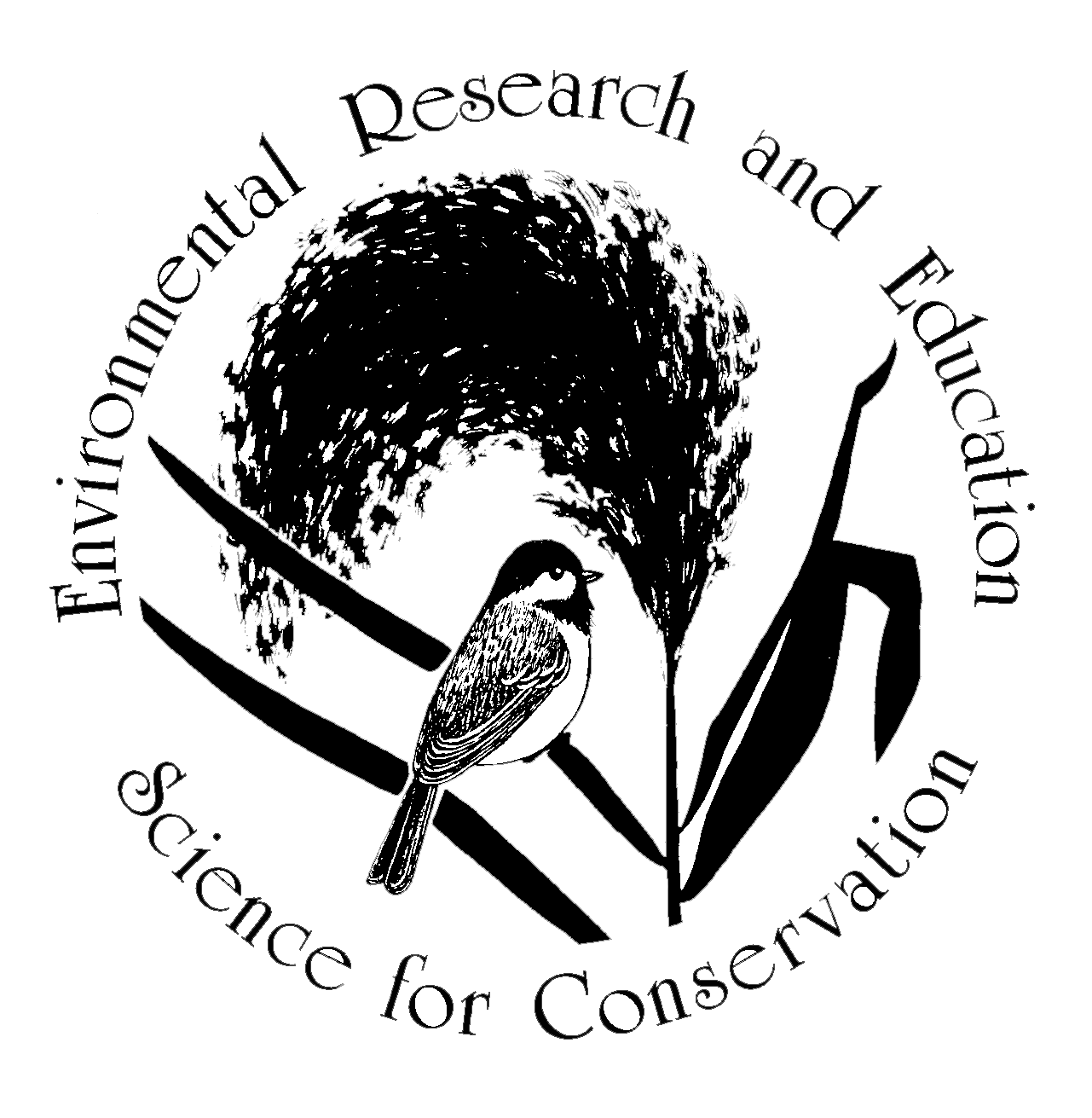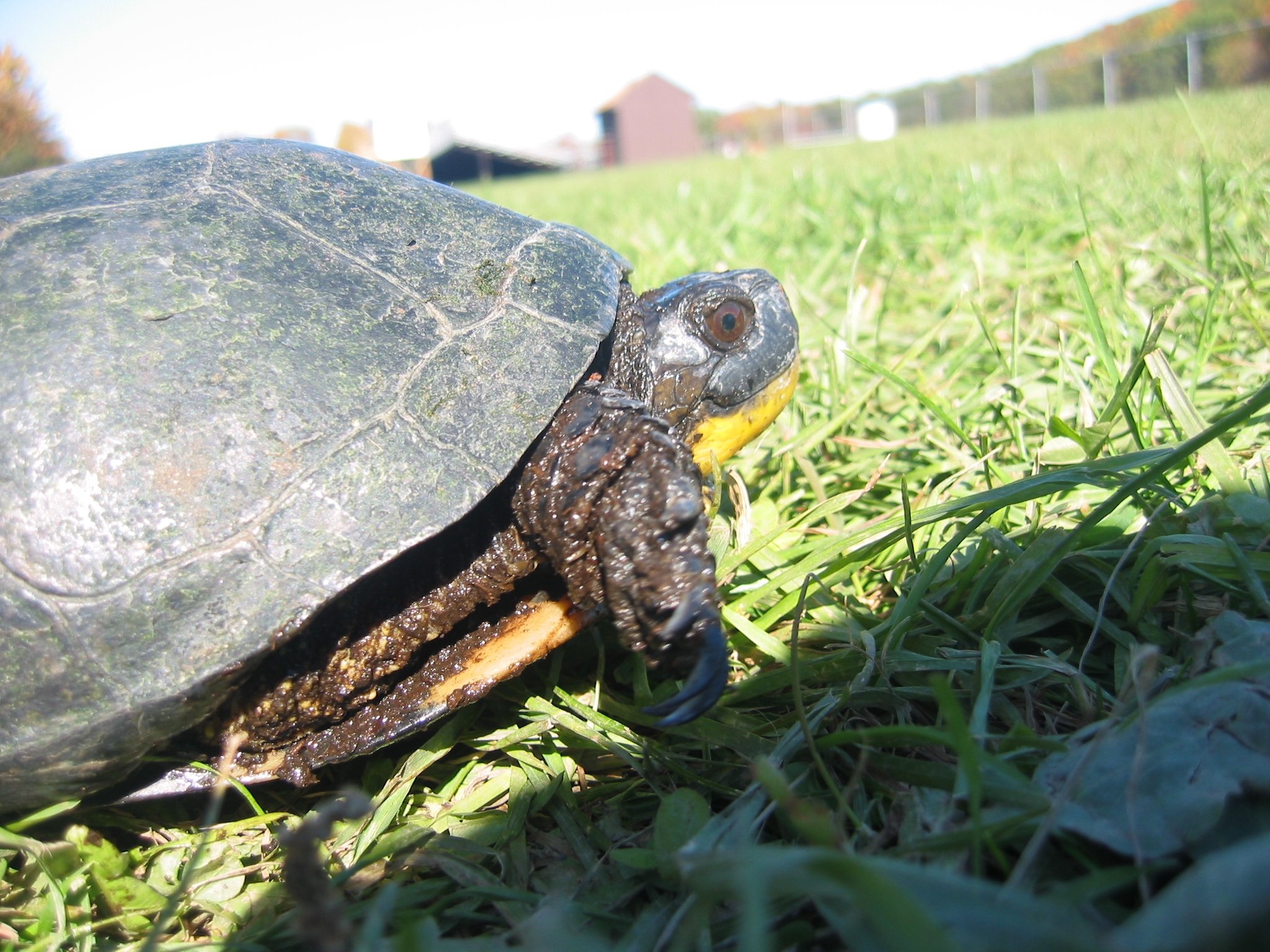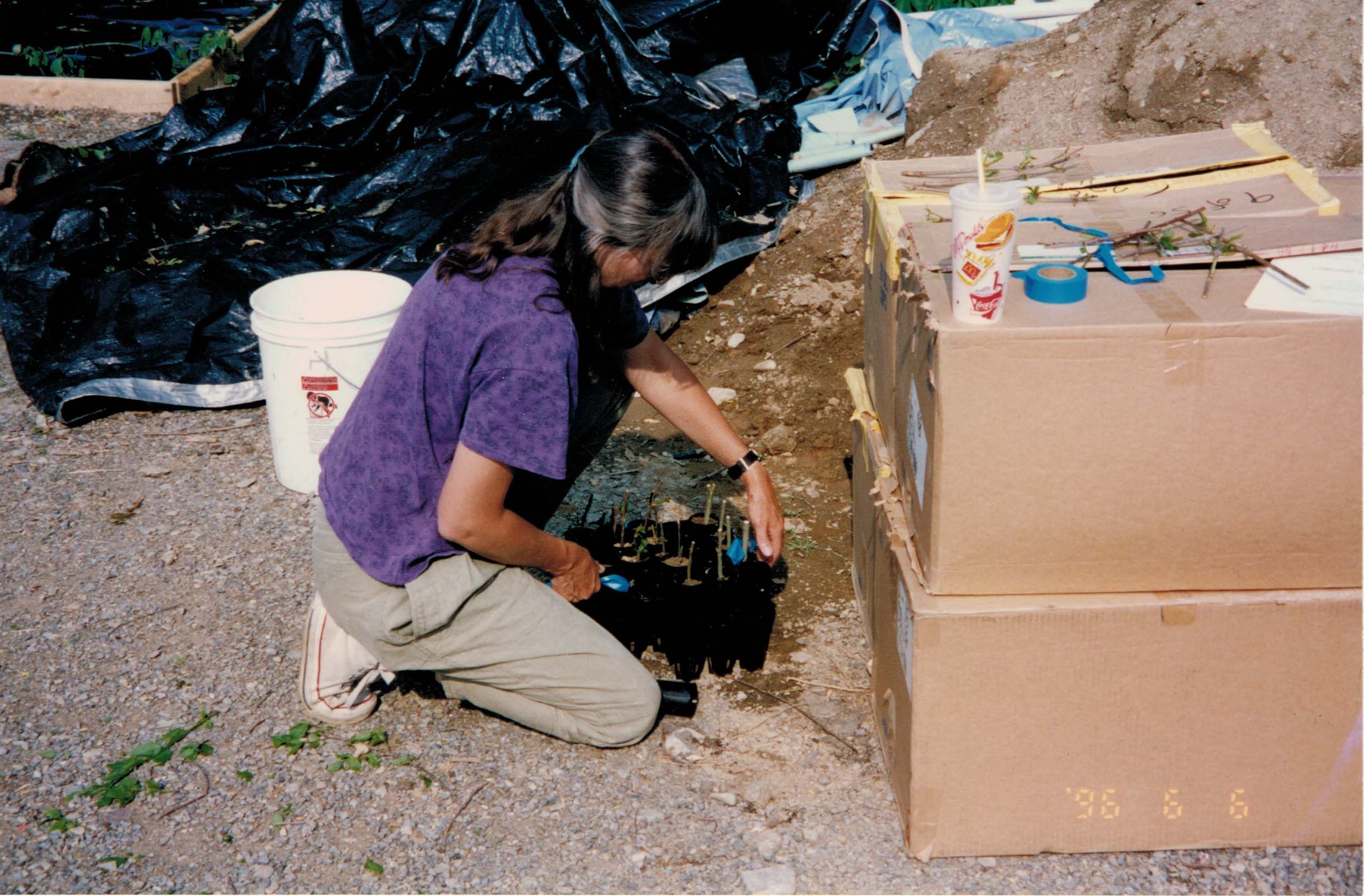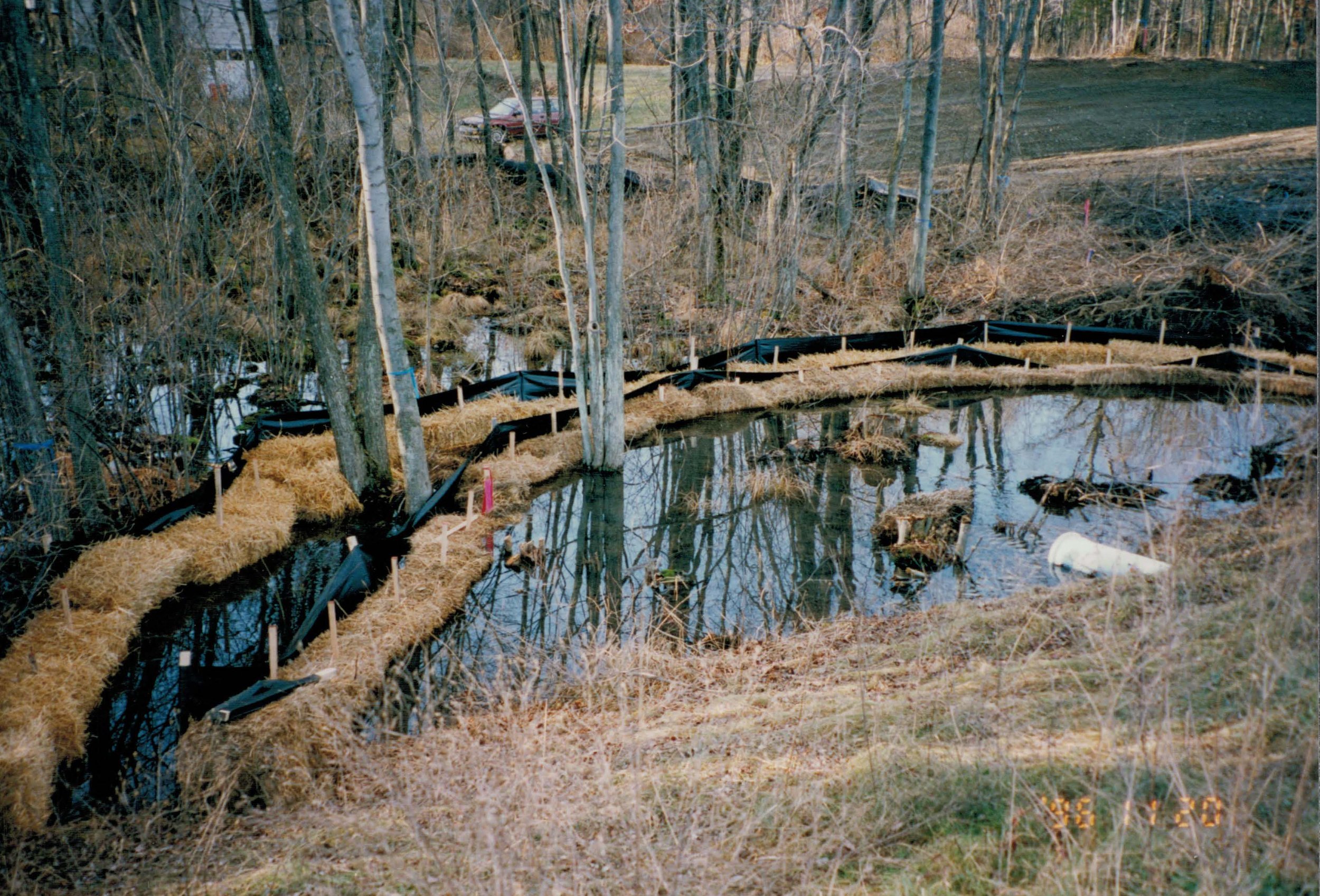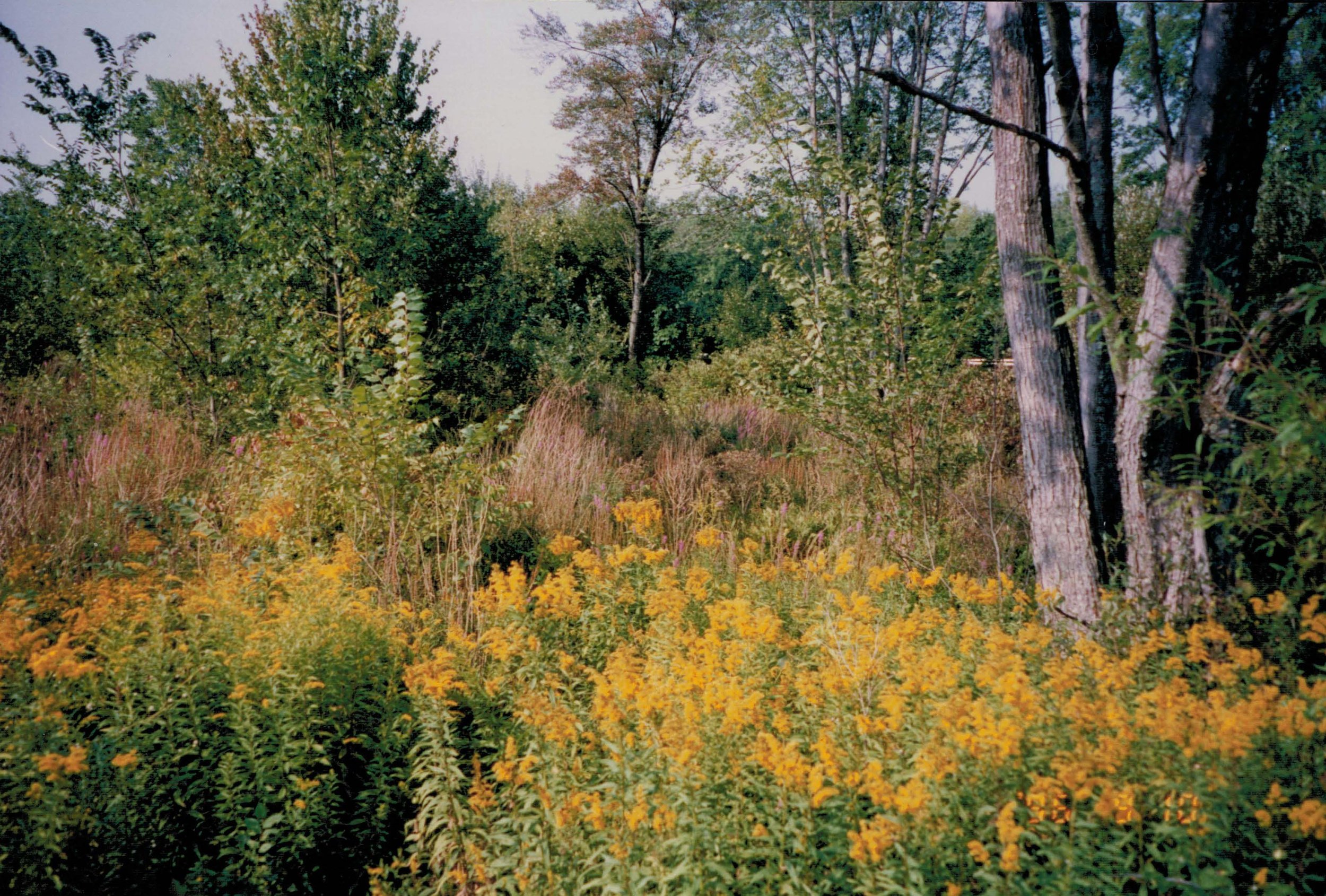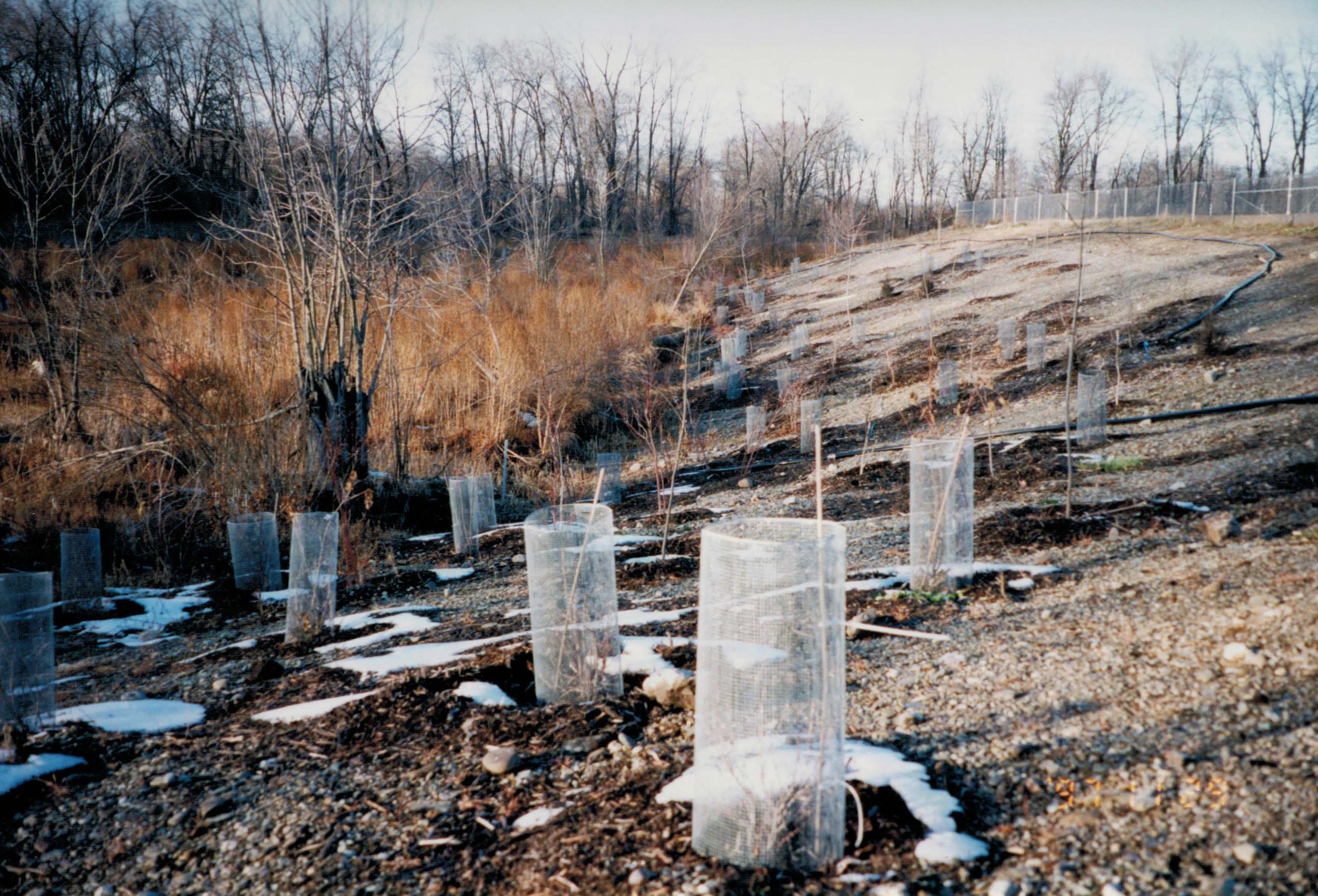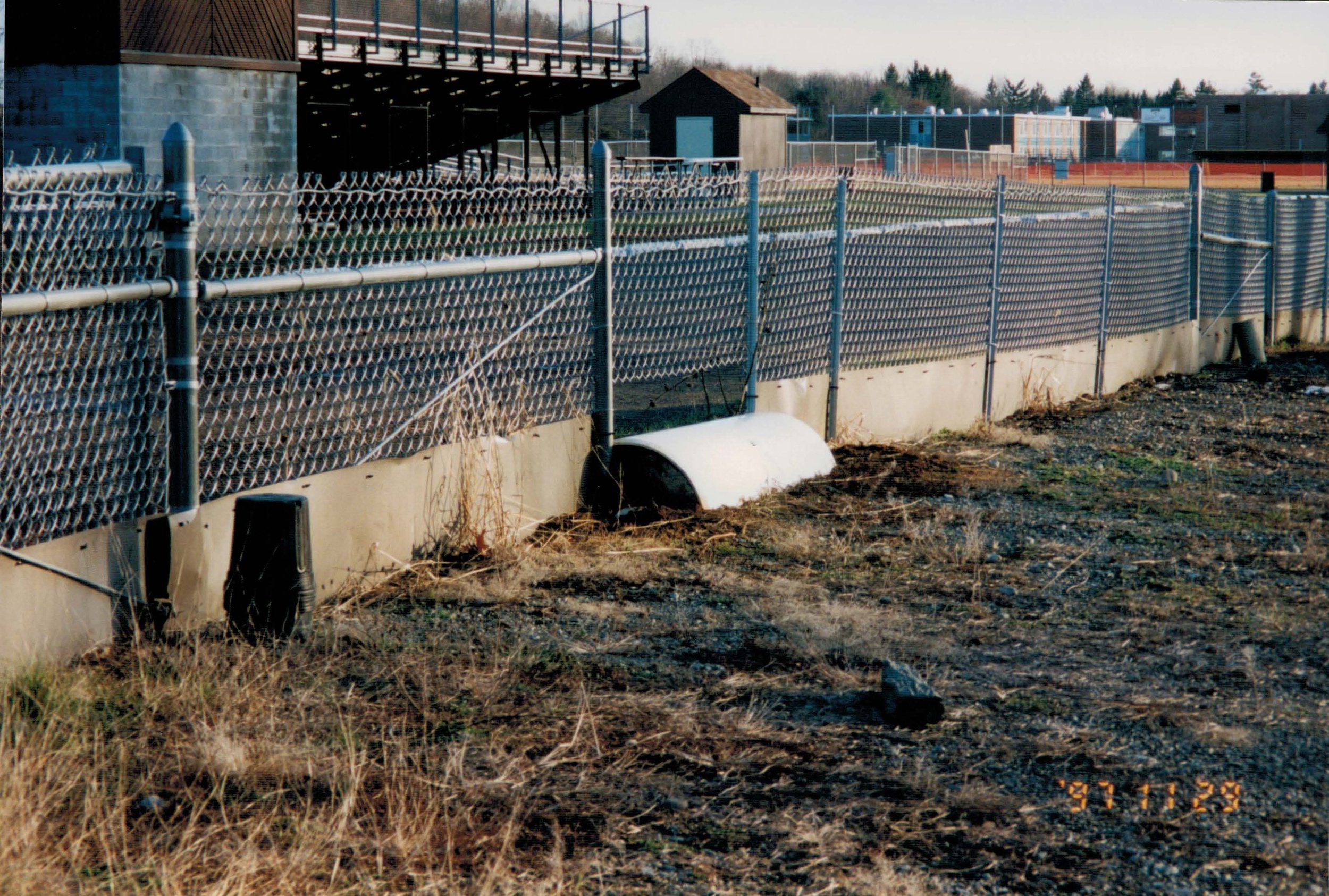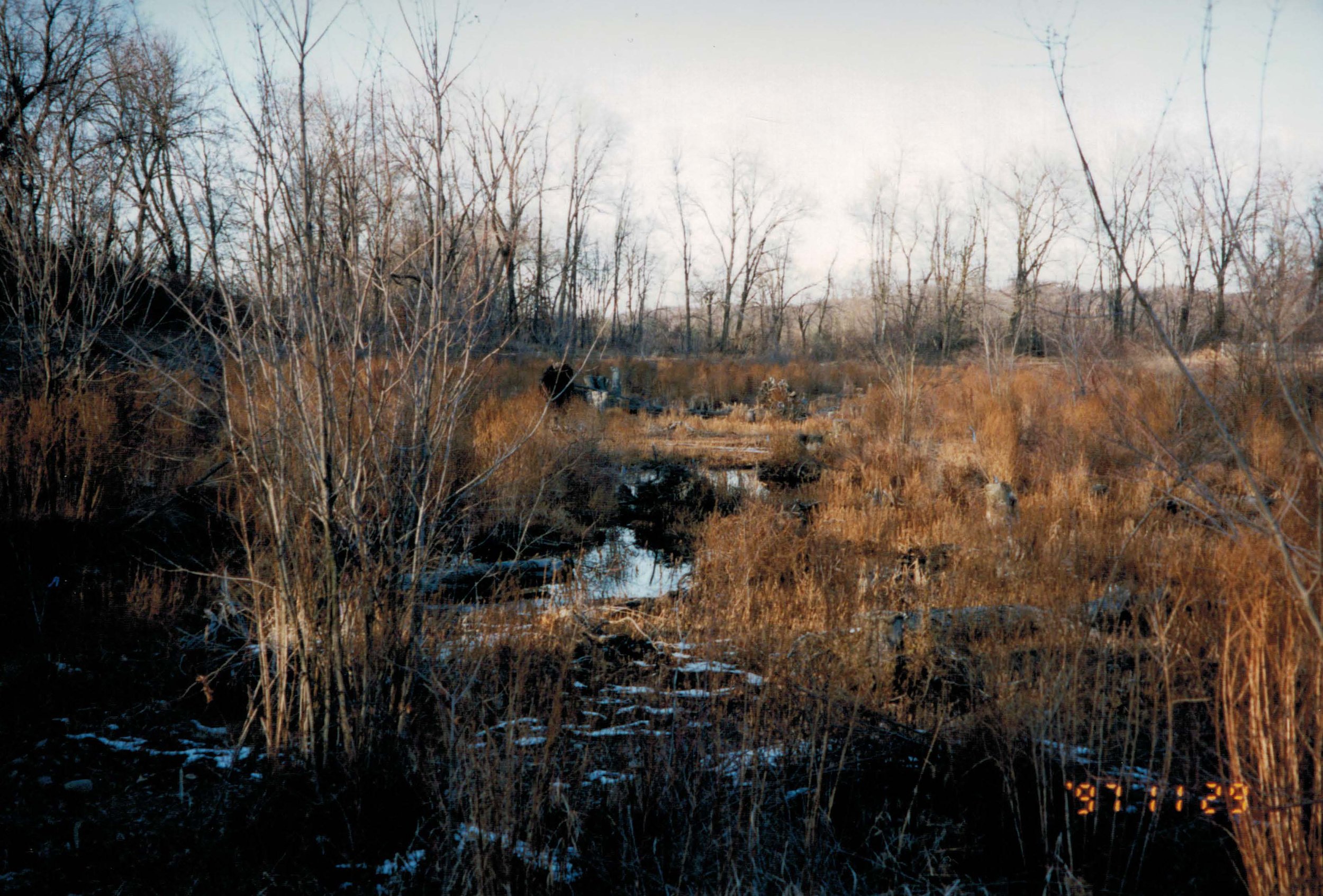Constructing a Turtle Habitat
Blanding’s turtle in a field
Habitat Restoration Project
In 1996 and 1997, Hudsonia directed an innovative habitat restoration project that went far beyond standard mitigation plans. The project began as a way to replace wetland and upland habitats that were slated for destruction during an expansion project at Arlington High School in the town of La Grange, Dutchess County, NY. These habitats were part of a complex used by a small, isolated population of Blanding’s turtles — a New York State Threatened species. Hudsonia agreed to design and oversee the creation of additional Blanding’s turtle habitat nearby. Working in conjunction with the New York State Department of Environmental Conservation (DEC), the New York State Office of Parks Recreation and Historic Preservation (OPRHP), and the Arlington Central School District, the project broke ground in 1996.
A specialized “spatula” was designed to painstakingly haul wetland soils and vegetation from a 0.7 hectares wetland (which was to be filled during the expansion) to several excavated basins nearby, producing 1.4 hectares of deep-flooding, shrubby wetlands. Since Blanding’s turtles require a variety of habitat types to fulfill their needs (for example, they often use shallow pools for foraging or basking and deep, mucky water bodies for overwintering), the plan called for the construction of a variety of wetland habitats, and thus added to the biological diversity of the wetland complex as a whole. The constructed habitats — situated within the pre-existing wetland complex between the school and James Baird State Park — include wetlands, upland nesting areas and a one-way turtle barrier designed to discourage the turtles from entering the school athletic fields and parking lot.
Since the project began, Hudsonia’s staff and volunteers have been continuously monitoring the turtle population’s response to the new habitats using methods such as live-trapping, radio tracking, nest surveys, and collection of soil, water and vegetation data from the pre-existing and constructed wetlands. Thus far, the data indicate that Blanding’s turtles are using these newly created habitats to forage, nest, and bask but not to overwinter. The habitats are, therefore, playing an important role in sustaining the population. However, they are not providing key overwintering habitat.
Thanks to this long-term vigilance, Hudsonia is able to demonstrate the merits and drawbacks of creating ecologically appropriate habitats for a rare species. Hudsonia’s precedent-setting work on the Blanding’s turtle project has not gone unrecognized; in 1997 the organization was awarded the Project Facilitation Award from the Society for Ecological Restoration. The Blanding’s turtle project is always looking for volunteers for the trapping and nesting season (May-June). Please contact us for more information. We also need your support to continue this valuable project. Please consider making a donation.
For more information about Blanding’s turtle, see Restoration and Upland Habitat for the Blanding’s Turtle, Emydoidea blandingii.
Scroll through some photos from the project here (1996-1997)

